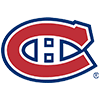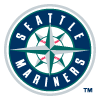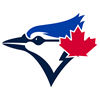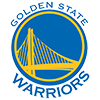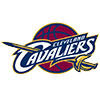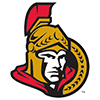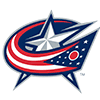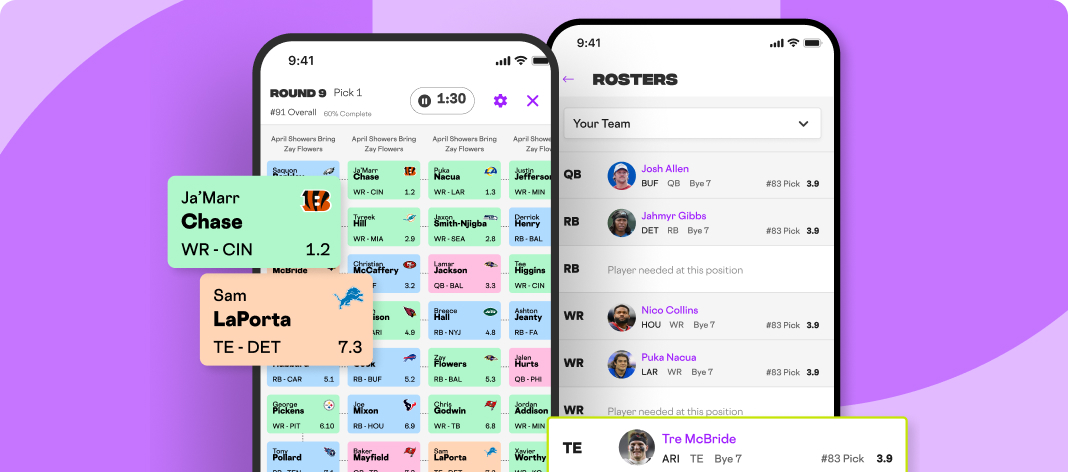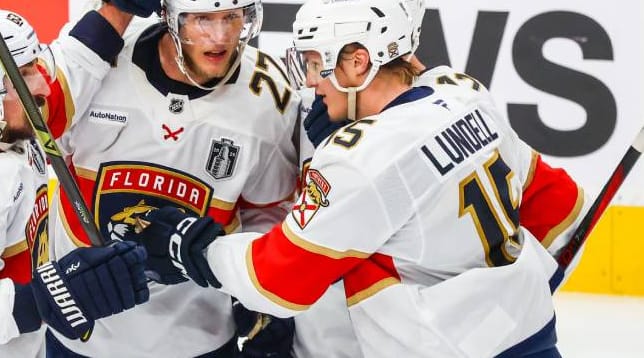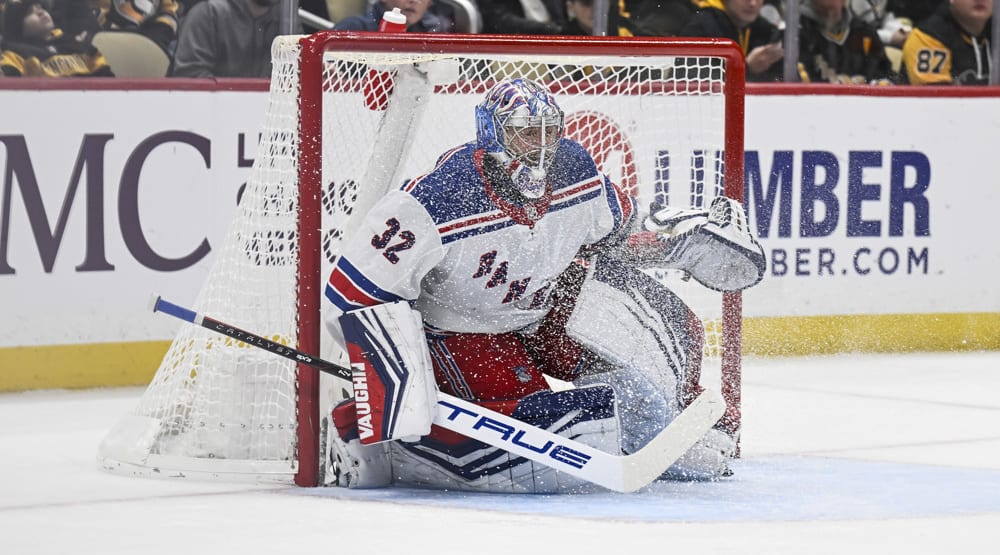Fantasy Hockey Season 2025-26: Top Players to Watch and Draft Strategies
I'm back for my fifth season of this column. I apologize for no preseason edition -- the draft schedule was a little busy. I'm not one to draft after the start of the season, but I had to break that rule in a couple of places after losing some long-term leagues I'd been part of. When one door closes, another opens.
Fantasy Hockey Draft Strategy: Adapting to Change
Two of those leagues couldn't be more different. One was run by a commissioner who included everyone in the discussion. Every year starts with a survey -- who's coming back, what do you want to see, which categories should we play. Every player had a voice, the league was pretty active, and there was plenty of communication on both sides. I had been in it since just about the first year I played fantasy. We were spread all over North America, but that was a good group to play with.
The other one, however, was chaotic. Prior to disbanding the league, the commissioner changed the draft date and time three times, as well as adjusting the rosters and categories. Seems like an awful lot of work to do just to drop it 90 minutes before draft time on the Monday before the season starts. There had been warning signs in previous years -- big shifts in league settings, and a fight in the draft chat room that led to another manager getting kicked out.
I'll be honest, it's been a lot of change for this fantasy season. I decided against public leagues this year. Nothing against them. I did fine last season in a handful of public leagues, which was fairly representative of a year where I won just three pools.
When something doesn't work out, it's time to evolve. The draft strategy this year was a little different. I went into the year over my head -- I spent hardly any of the summer thinking about hockey in a meaningful way. Those first few drafts in mid-September could lead to some interesting results. What didn't help my cause was drafting in the top four spots in under a quarter of my leagues. I'll never advocate for a zero-goalie strategy, but I was willing to be more patient than usual to fill out my crease. Getting a top-tier goalie wasn't hard, as I've got Dustin Wolf in nearly half of my leagues and Connor Hellebuyck in a quarter, as well as healthy investments in Thatcher Demko, Jacob Markstrom, Ilya Sorokin and Igor Shesterkin. I'm a little light on my Jake Oettinger and Andrei Vasilevskiy shares, but that's the point. In previous years, I wouldn't have blinked at two goalies in four rounds, but this year, I was fine with letting that No. 2 slot linger into the 10th round or later. Knowing that there's a crop of goalies, including Lukas Dostal, Joey Daccord and Spencer Knight available late, made that an easy choice to get a high-ceiling No. 3 or 4, depending on the roster construction.
Meanwhile, here's the rest of my most-drafted group. I've got a lot of Tim Stutzle and J.T. Miller down the middle, while David Pastrnak, Filip Forsberg, Seth Jarvis, Jesper Bratt, Adrian Kempe, Martin Necas and Dylan Guenther were some of my favorite wing picks. On the blue line, Josh Morrissey was a staple, along with Adam Fox, Mikhail Sergachev, Aaron Ekblad, MacKenzie Weegar, Jackson LaCombe and Brock Faber. Across my leagues, I took a total of 204 different players, so I've got a lot of interests across the league with plenty of different roster builds.
On the flip side, I intentionally missed out on a lot of Leon Draisaitl opportunities. On the rare occasions I drafted second, Nathan MacKinnon was my guy over Draisaitl -- unless Connor McDavid was passed over. I'm also out on Kirill Kaprizov and Sam Reinhart. There's nothing wrong with them, but I liked Pastrnak and Kyle Connor or Forsberg better in the first and second rounds. Dylan Larkin and Nico Hischier were largely outside of my draft flow as well, as were Brandon Hagel, Clayton Keller, Travis Konecny, Roope Hintz, Jakob Chychrun, Mackenzie Blackwood (lower body), Filip Gustavsson and Sergei Bobrovsky. I didn't get a single share of Sidney Crosby, Roman Josi, Robert Thomas, Tage Thompson, Connor Bedard, Dylan Strome, Victor Hedman or Alex DeBrincat, who were all top-100 on my board.
Part of the evolution in strategy was forced by drafting in the latter half of the first round. The rest was a choice to mitigate injury risk or to ride with a player I believe to be more consistent. This year will test my management skills. Most of my teams don't have a 100-point lock to rely on, so it'll take a collective effort from good depth picks and waiver-wire choices to make up the difference. It's not ideal, but that's the way it goes.
Top Players to Watch This Fantasy Hockey Season
I'll forgo the usual waiver-wire stuff for this week. I'm practicing patience, and that means no rash decisions after less than a week of the season. Instead, I've got my annual look at one player on each team that has my attention for 2025-26. Some will be potential adds -- they've caught my eye this week, even if I'm not ready for a full-throated endorsement on anyone. Others are just interesting storylines or breakout candidates. Some will be hits, and some will be misses. That's the nature of the beast here. Without further ado, my Ones To Watch.
Anaheim: Mason McTavish. This could be any number of players, but McTavish's holdout and subsequent six-year contract drew the spotlight. He's a center, and it's his time to take over the second line for the injured Ryan Strome (upper body). So far, so good: McTavish has four assists over two games. He's clicked with Cutter Gauthier and Beckett Sennecke on one of the most promising young lines to emerge from the first few games. It won't be long before I'm looking to add any of those three to my lineups.
Boston: Morgan Geekie. Even when he was in my neck of the woods in Seattle, I didn't think Geekie would ever be much more than a bottom-six forward. He's proved that wrong with 39 points in 2023-24, followed by a 33-goal, 57-point breakout in 2024-25. He won't shoot 22.0 percent again like he did last year, but he's still playing with David Pastrnak. Geekie's physicality is a plus, and he has eligibility at all three forward positions in Yahoo formats. A 40-point pace with 100-plus hits is enough to be a good depth forward, but Geekie will probably be a little better than that, as long as the Bruins don't fall any further.
Buffalo: Bowen Byram. Put me in the camp of thinking the Sabres shouldn't trade Byram. He has top-four talent, and even with a crowded blue line, Buffalo should have plenty of ice time for him. No points in the first two games is a concern, but the team has just one goal. Offense will come, and Byram will play a part in it. He had 38 points in 82 games in 2024-25, and just two of those points came on the power play. Keep him around and find out where his ceiling is.
Calgary: Matthew Coronato. Obviously, I'll have plenty of eyes on Wolf for fantasy purposes. Coronato was one of my sleeper picks as well. I love his shot -- just take a look at his second goal in Saturday's 4-2 loss to the Blues. Pure sniper. The Flames don't have a ton of talent, but Coronato's got a natural gift. If he can get up to around 250 shots a year, it's not a stretch to think a 30-goal, 60-point campaign is in the cards, assuming there's enough talent around him to get him the puck.
Carolina: Logan Stankoven. I'm bending my personal rule here -- Stankoven was my Dallas player to watch last year, and I prefer not to repeat year-to-year. However, he was part of a blockbuster trade and on a new team, and the Hurricanes are letting him play second-line center. Stankoven is undersized, especially to play down the middle, but his compete level is superb. He can't do worse than Jesperi Kotkaniemi, who will go down as a big overpay for Carolina. Stankoven is on a team-friendly $6 million cap hit from 2026-27 onward, and he'll be worth every penny if his career progression continues to go straight up.
Chicago: Sam Rinzel. Saying a player is a team's best blueliner less than 10 games into his career is hyperbole at its best -- except the chatter out of Chicago might just be true. Rinzel had five points in nine NHL games after his sophomore year at the University of Minnesota, and he's playing top-pairing minutes to begin 2025-26. He was another of my sleeper picks. I almost hate to shed light on him now, but you should pick him up before a rival does if he's going to continue on PP1 for the Blackhawks.
Colorado: Martin Necas. I've got plenty of Necas shares. He's in a contract year and playing alongside one of the best centers on the planet -- what's not to like? Necas is going to get paid this summer, whether it comes out of the Avalanche's pockets or someone else's. The smart move would be to get him signed ASAP, as the price is only going to rise. He's already got three goals and six points through three games.
Columbus: Denton Mateychuk. Last year gave us a good taste of what the Blue Jackets' forward prospects could do. Now it's time to see what the blue line holds. Mateychuk has an assist and two blocked shots over two games to begin 2025-26, but he's been on the third pairing with no power-play usage. I expect both of those roles to change for the better over time. This may not be his breakout year, but there's no doubt in my mind he'll prove he belongs in the NHL.
Dallas: Thomas Harley. Truth be told, Harley doesn't really need to sell me anymore. He's totaled 31 goals in 157 games over the last two seasons, which is excellent for any defenseman, let alone a 24-year-old. He's opened with four points over two games in 2025-26. Miro Heiskanen's gift is also his curse -- he's starting to get pigeonholed by his defensive brilliance. Harley has no such burden, though he's no slouch in his own end either. I fully expect his 50-point campaign from last year is the floor, not the ceiling.
Detroit: Marco Kasper. One of my early-draft sleepers, Kasper, impressed me when he moved to the second-line center spot last year. He ended up with 19 goals and 37 points in 77 games as a rookie, and he also brings a physical edge. I'd like his ice time to go up from the 15:27 he averaged last year. Kasper has a good draft pedigree (eighth overall in 2022) and is in a position to succeed, assuming he can avoid a sophomore slump.
Edmonton: Isaac Howard. I hate to jump on a hype train this early, but Howard is intriguing after forcing his way out of the Lightning organization. He's started his NHL career on the fourth line, which has led to no points over his first two games. Among rookies this year, he's a boom-or-bust option. I could see him taking off big time if he gets a top-six look. I could also see him struggle enough in the bottom six that he gets a ticket to AHL Bakersfield. Either way, he's a fascinating story.
Florida: Anton Lundell. He's already an established talent, but Lundell has more opportunities this year than ever before. He has the defensive chops to replace Aleksander Barkov (knee), but for fantasy, I want to see Lundell push for 60 points. He's off to a good start with two goals and an assist over three games while averaging 17:52 of ice time. This may be a one-off type of season for Lundell, or it could be just what head coach Paul Maurice needs to see to push Sam Bennett to the wing next year.
Los Angeles: Anze Kopitar. I faded Kopitar in fantasy this year. His 21.4 shooting percentage last year scared me off. That said, I love good defense, and Kopitar's brought that for 20 years in the NHL. This is his curtain call, and the final offensive numbers don't matter as much as giving due respect to one of the best players of a generation. Maybe the Kings can go on a deep run with him one more time.
Minnesota: Zeev Buium. I'm glad the Wild aren't sheltering Buium to start. He had two points in a 7-4 loss to the Blue Jackets on Saturday and played 24:39 even with Jonas Brodin (upper body) back in the lineup. One of the hardest choices late in fantasy drafts was Buium or Faber. Truth be told, I don't know who will get the power-play minutes here in the long run. I ended up getting some shares of both, but Buium's scoring upside is higher between the two.
Montreal: Zachary Bolduc. I have no clue what the Blues were thinking when they traded Bolduc to the Canadiens for Logan Mailloux. It would have made sense if the Blues were thin on the blue line, but they're not. In any case, Bolduc has hit the ground running with three goals and an assist over three games in 2025-26. He's in a top-six role and on the first power-play unit. Last year's 19-goal, 36-point effort appears to be just the tip of the iceberg for what could be a long and productive career as a power forward.
Nashville: Luke Evangelista. Like McTavish (above), Evangelista missed time in training camp awaiting a new contract. There's not as much upside with Evangelista, but he's still an intriguing player on a Predators team that is still trying to figure out what went wrong last year. He flirted with the 40-point mark, falling one shot in 2023-24 before regressing to 10 goals and 32 points over 68 outings last year. He'll need more ice time -- he was under 14 minutes per game in both of those years -- but there's talent here if he gets the opportunities.
New Jersey: Jacob Markstrom. I didn't really have an eye on any Devils in particular before the start of the season. I like the top six and the defense, but the bottom six is a little thin. Markstrom was one of my No. 2/3 goalies in fantasy, and I'm a little worried with him allowing eight goals on 49 shots over his first two games of the season. At 35 years old, it's possible he's wearing down, especially since he's been a regular starter since 2017-18. His 2.50 GAA last year was on the positive side of his usual level of performance, though the .900 save percentage was a little weak. Let's see how this plays out -- he won't make or break my fantasy teams, but he could throw a wrench in the Devils' plans this year if he can't get on track.
NY Islanders: Matthew Schaefer. Rookies almost always make me nervous in fantasy, especially 18-year-olds. Most of the time, they turn out fine anyway. This year, I decided to jump in on Schaefer, picking him up in a handful of places. He's already earned two points in two games and is looking like the long-term power-play quarterback for the Islanders. That was a place the team needed to improve after 2024-25. I'm not willing to pencil him in for the Calder just yet, but Schaefer's already gaining trust on the fantasy blue line.
NY Rangers: Adam Fox. He's one of my top blueliners for a reason. Fox doesn't quite rise to the level of offense necessary to challenge for a Norris Trophy, but he's among the best blueliners in the league in that regard. He blocks plenty of shots and keeps a positive plus-minus rating as well. Fox missed the 70-point mark last year, but I'm willing to lay the blame for that on the dysfunction of the Rangers as a team rather than a regression in his skills. The bounce-back could be massive here.
Ottawa: Dylan Cozens. I don't love the way the Senators play, but there's no question it's working. They've forged an identity -- big, physical, relentless -- and they've gone out of their way to get players to match the collective. Cozens is one of them, coming over from the Sabres at the trade deadline last year. He's flashed 30-goal potential before. I didn't get much of him in fantasy, but I'm keeping an eye on how he does early in the season. He'll be at the top of my waiver-wire list if he gets hot.
Philadelphia: Trevor Zegras. Injuries and declining production brought Zegras' time in Anaheim to an end. In contention cycles, he took a step back as well, joining a Flyers team that's at least a few years away after just going through this phase with the Ducks. He's picked up one assist through two games in orange and black. Zegras' creativity is enticing, but he needs consistency more than anything else after logging just 47 points across 88 appearances over the last two years combined.
Pittsburgh: Sidney Crosby. He's another player I didn't draft but want to watch. I don't think Crosby is done after this year -- he's still playing at too high a level to leave, with three straight 90-point campaigns. He'd never done that before in his career, as injuries disrupted too many seasons in his prime. I also don't think Crosby's leaving Pittsburgh. Take the man at his word: he wants to stay with the only club he's ever known. He's already won the Stanley Cup, so he doesn't have to chase another title.
San Jose: Will Smith. Macklin Celebrini is great already, but I'm looking to see what Smith can do. The Fresh Prince of San Jose had 45 points in 74 games as a rookie last year and took big strides later in the year. A natural center, Smith is on Celebrini's wing to begin 2025-26. I'm not sure if Smith is a future fantasy superstar -- he doesn't bring category coverage -- but he has all the makings of a very good player for years to come.
Seattle: Vince Dunn. It's been a while since we've seen a healthy year of Dunn. He's lost a total of 43 games over the last two seasons combined. At his best in 2022-23, he put up 64 points in 81 regular-season outings while helping the Kraken to their only playoff berth. Dunn's injury history clouds his talent, though I don't think another 60-point campaign is in the cards. He's started 2025-26 with a goal and two assists over two games, in which Seattle has scored just five total goals.
St. Louis: Dylan Holloway. The Blues' big move to snag Holloway and Philip Broberg from the Oilers last year was a success, ending in a playoff berth. Holloway had 26 goals and 63 points in his first year with the Blues, benefiting from top-six minutes and power-play time that just wasn't available to him in Edmonton. He's gone without a point in two games to begin 2025-26, but Holloway's mix of goal-scoring skill and grittiness makes for a fantasy-friendly profile, as long as he doesn't regress too much.
Tampa Bay: Darren Raddysh. Over the last two regular seasons, Raddysh has a total of 70 points in 155 games. His defense is passable -- the Lightning wouldn't tolerate less. He has a thin margin for error, though, as he's been scratched when his play slips too much. Raddysh can work on the second power-play unit and doesn't hurt fantasy managers in too many areas. Keep him in mind whenever you need to replenish your defensive depth.
Toronto: Bobby McMann. Last year, McMann had 20 goals and 34 points over 74 regular-season games. He was a bottom-six forward much of the time, but he shone in top-six situations and showed some skill on the power play. At 29 years old, he's definitely a late bloomer -- he's just now going into his third full campaign. The departure of Mitch Marner created a top-six opening, and I'd be shocked if McMann ultimately isn't the one who fills the void.
Utah: Logan Cooley. A 25-goal, 65-point sophomore season? Yeah, no slump there. Cooley was viewed as a playmaker prior to his draft year, but he's rounded out his game nicely in two NHL campaigns, with 45 goals and 64 assists over 157 contests. He's on the precipice of superstardom, with the potential to be a perennial point-per-game player or better within a couple of years as the centerpiece of the Mammoth's offense.
Vancouver: Kiefer Sherwood. The 30-year-old gave himself a claim to fame in 2024-25 with a league-record 462 hits in a season. You'd think that kind of number would be attached to some fourth-line plug, but Sherwood was all over the lineup while earning 19 goals and 40 points in 78 appearances. He's still not seeing enough power-play time for my liking, but he could be a 15-goal, 35-point regular who brings elite physicality. It won't work in every format, but it's gold in fantasy leagues that reward hits.
Vegas: Pavel Dorofeyev. Deep offense plus elite power-play plus shoot-first mentality. That equals five goals in three games to begin the season. Like I said earlier, don't overreact, but Dorofeyev's shot is real and really good. He had 52 points in his first full campaign last year, including 13 goals and four assists on the power play. Is he a little one-dimensional? Yeah, but that's the one dimension every fantasy manager has patience for. Don't be left behind seeing the wrong type of red -- you want to bask in the glow of the goal light every time Dorofeyev nets one.
Washington: Aliaksei Protas. You don't often see a player put up 66 points in a season where just one of them came on the power play. Even more impressively, he had five shorthanded points. Protas paid his dues in 2024-25 and dominated in a less-than-ideal role. He's getting power-play minutes to begin 2025-26, and hopefully that will help offset the inevitable drop from shooting 21.1 percent. In any case, he's here to stay in the NHL, and he gives the Capitals a little youth in the top six.
Winnipeg: Jonathan Toews. Credit to Toews: he could have left the skates on the wall after 2022-23 and never touched ice again. He doesn't have to prove anything to anyone -- three-time champions don't grow on trees. His love of the game proved stronger, and he's seeing top-six usage for his hometown Jets to begin 2025-26. He's been through a lot, both on and off the ice. All the best to an excellent player, as he gives it at least one more go in the NHL.
You all know the drill by now. I'll have a column up (mostly) every Monday throughout the season with looks around the league for fantasy adds and a little bit of trade talk, as well as my thoughts on the happenings in hockey and the great sports world. Thanks, as always, for following along, and good luck in your fantasy endeavors this season!
Stuck between two players available on the waiver wire? Check out the NHL Player Comparison Tool or the NHL Trending Players to help break the tiebreaker on your waiver wire decisions.










